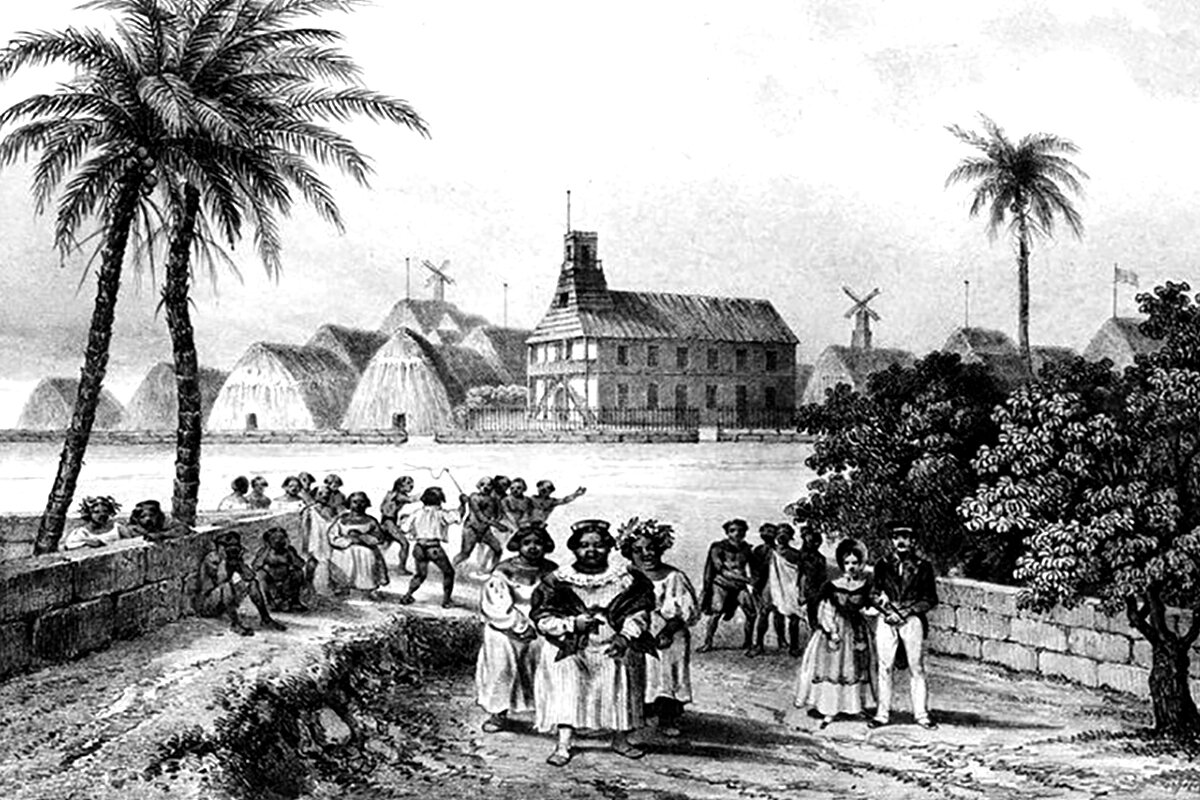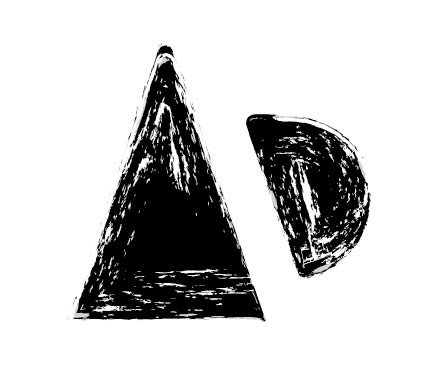Collection 1
Photographs and illustrations of the various formal types of the Hawaiian hale. The first 3 images show evidence of a complex matrix of architectural form existing before the European building styles overwhelmed the islands. The following 3 show depictions of how space was inhabited as westerners began to immigrate into the Hawaiian Monarchy. The last 3 show various homes of King Kamehameha V, these works initiated the architectural transformations that became the ala (path) of the Hawaii vernacular. In the 1830s and 40s when these homes were constructed the Hawaiian vernacular started making dramatic shifts toward what we see in Hawaii today. It is only assumed that people follow the preferred style of their last Great Traditional King. These images are mostly taken with a European perspective. Dates range from lithographs by Webber circa 1780 to photographs and paintings by Howard Hitchcock circa 1900. In this first huhui (collection) images are found in the book, The Ancient Hawaiian House published in 1908 by the Bishop Museum Press.









Collection 2
Photographs and illustrations of the various formal types of the Hawaiian hale. Evidence of the Hawaiians integrating discrete European building components into their building form and technology. These images are mostly taken with a European perspective. Images in this second huhui are found in the Hawaii State public archive.









Collection 3
The following illustrations and photograph are evidence of the various scales and prevalence of the various Hawaiian architectural forms. In these images we can see that the vernacular form and western form coexisted heterogeneously and also as an amalgamation. Before long, the European building styles transformed the Hawaiian vernacular into what we see today. These images are mostly taken with a European perspective.
Image sources left to right: Street view in Honolulu with Kinau in the foreground, by Louis Jules Masselot (1837); Old Native church (kawaiahao), by Francis Allyn Olmsted as seen in Incidents of a Whaling Voyage, publish in 1841; Hawaii State archive.



The work prepared on this page is academic in nature and sources are continuously collected and added to the living bibliography bellow.
Frequent resources
Barthes, Roland. Elements of Semiology. Noonday Press, 1988.
Becket, Jan., and Joseph Singer. Pana O’ahu = Sacred Stones, Sacred Land. Honolulu: University of Hawai’i Press, 1999.
Brigham, William Tufts. The Ancient Hawaiian House. Whitefish, MT: Kessinger Pub., 2010.
Brooks, L. M. “THE POLYNESIAN FAMILY SYSTEM IN KAU, HAWAII. By E. S. Craighill Handy and Mary Kawena Pukui, with a Concluding Chapter on the History and Ecology of Kau by Elizabeth Green Handy. Wellington, New Zealand: The Polynesian Society, Inc., 1958. 259 Pp.” Social Forces, vol. 39, no. 1, 1960, p. 94.
"Cultural History of Three Traditional Hawaiian Sites (Chapter 1)." National Parks Service. Accessed October 30, 2020. https://www.nps.gov/parkhistory/online_books/kona/history1d.htm.
Eco, Umberto. “Function and Sign: The Semiotics of Architecture.” Rethinking Architecture: A Reader in Cultural Theory, Routledge, 1997, pp. 173–186.
Buck, Peter Henry, and Bernice Pauahi Bishop Museum. Arts and Crafts of Hawaii. Reprint of bound volume. ed., Bishop Museum Press, 2003.
Empire of Signs _ Roland Barthes – The line between signal and understanding. Associating different sign data to how we understand the world around us. Transfiguring the diagram into the spatial.
Handy, E. S. Craighill, Pukui, Mary Kawena et al. The Polynesian Family System in Ka-'U, Hawai'i. Polynesian Society, 1958.
Hays, K. Michael. “Critical Architecture: Between Culture and Form.” Perspecta, vol. 21, 1984, p. 14., doi:10.2307/1567078.
Hibbard, Don J.., et al. Hart Wood Architectural Regionalism in Hawaii. University of Hawaii Press, 2010.
Hibbard, Don J., and Augie Salbosa. Buildings of Hawaii. University of Virginia Press, 2011.
Guyer, Paul. “FORMALISM AROUND 1800: A GRUDGING CONCESSION TO AESTHETIC SENSIBILITY.” Filozofija i Društvo (Zbornik Radova), vol. 30, no. 2, 2019, pp. 241–256.
Jorgensen, Kelsy M.Y. E Hoi Ka Ui: Perspectives on Placemaking in Hawaii. School of Architecture, University of Hawaii at Mānoa, 2019.
Kamakau, Samuel Manaiakalani. The Works of the People of Old = Na Hana a Ka Po'e Kahiko. Bishop Museum Press, 1976.
Ladefoged, Thegn N. “Hawaiian Architectural Transformations during the Early Historic Era.” Asian Perspectives (Honolulu), vol. 30, no. 1, 1991, p. 57.
Laugier, Marc Antoine, and Samuel Wale. An Essay on Architecture; in Which Its True Principles Are Explained, and Invariable Rules Proposed, for Directing the Judgement and Forming the Taste of the Gentleman and the Architect .. Printed for T. Osborne and Shipton, 1755.
Malo, David, and Nathaniel Bright Emerson. Hawaiian Antiquities (Moolelo Hawaii). Hawaiian Gazette Co., Ltd., 1903.
Moholy-Nagy, Sibyl. Native Genius in Anonymous Architecture. Schocken Books, 1976.
Ossipoff, Vladimir, and Dean Sakamoto. Hawaiian Modern: The Architecture of Vladimir Ossipoff. Yale University Press, 2008.
Riznik, Barnes. “The Architecture of Charles W. Dickey: Hawaii and California. Robert Jay.” Winterthur Portfolio, vol. 28, no. 2/3, 1993, pp. 201–204., doi:10.1086/496625.
Semper, Gottfried. The Four Elements of Architecture and Other Writings. Cambridge University Press, 1989.
Seiler, Robert M. “Https://Www.ucalgary.ca/.” Https://Www.ucalgary.ca/, University of Calgary , people.ucalgary.ca/~rseiler/semiolog.htm.
Shinohara, Kazuo. “A Theory of Residential Architecture.” Japan Architect, no. 10, 67AD.
Stewart, C. S. Journal of a Residence in the Sandwich Islands, during the Years, 1823, 1824, and 1825: Including Remarks on the Manners and Customs of the Inhabitants .. University of Hawaii Press for Friends of the Library of Hawaii, 1970.

